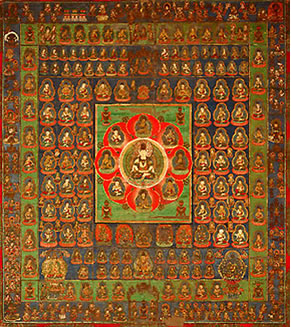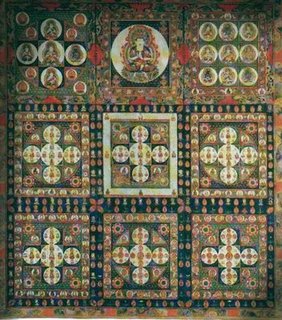Shingon Esoteric Buddhism
The Shingon Path to Enlightenment
The Four Noble Truths of Life
The historical Buddha, (born Siddartha Gautama around 563BC in India), known as Shakyamuni Buddha, taught us the 4 core truths about human life:
1) Human life is characterized by periods of suffering, conflict, and pain.
2) The root of the suffering is attachment to our notions of how things ought to be or how we want them to be.
3) By loosening our tightly held beliefs and notions, we can eliminate the attachment and thereby release the suffering.
4) Meditation practice and the teachings or Dharma light the way and show us how to attain ultimate happiness.
The Shingon school of esoteric Buddhism teaches us that it is possible to achieve spiritual enlightenment and break the karmic cycle of human rebirth in this very lifetime. The material/physical earthly realm provides us this opportunity and the teachings of Shingon light the way. Of course, all true spiritual paths emanate from the same source and this is graphically depicted in the mandalas. Connecting with that divine source is what we seek as human beings walking a spiritual path.
It is within the material-spiritual balance/reunification that we find our highest potential as human beings and the teachings of Shingon show us how to achieve this balance. One of the primary goals as stated in the Mahavairocana Sutra and often referenced by Ajari Tanaka is Nyojitsu Chi Jishin which means to know one's mind as it truly is. The Mahavairocana Sutra is a core text of Shingon doctrine.
 The Taizokai Womb Realm Mandala showing the Shingon pantheon with Dainichi Nyorai in the Central Lotus Section. The Taizokai represents the world of physical phenomena.
The Taizokai Womb Realm Mandala showing the Shingon pantheon with Dainichi Nyorai in the Central Lotus Section. The Taizokai represents the world of physical phenomena. The Kongokai Diamond Realm mandala shows the workings of ultimate truth and reality and complements the Taizokai.
The Kongokai Diamond Realm mandala shows the workings of ultimate truth and reality and complements the Taizokai. Buddhism in general shows us how to eradicate the root of suffering by understanding its cause and how to transform it into permanent happiness.
The esoteric traditions, which today exist only in Japan and Tibet, combined the Buddha's early teachings exoteric known as Sutra with his later esoteric teachings known as Tantra and were heavily influenced by Hindu and Vedic teachings as well as the indigenous traditions, Shinto in Japan and Bon in Tibet. Rev Tanaka spent five years in India studying Hinduism and speaks of the complementary aspects of Buddhism's philosophy and Shinto's reverence for nature.
Tanaka Sensei's primary message is very simple: Through consistent everyday practice, little by little, we can come to enjoy a creative and happy life.
"My religion is very simple. My religion is kindness." – His Holiness The Dalai Lam




